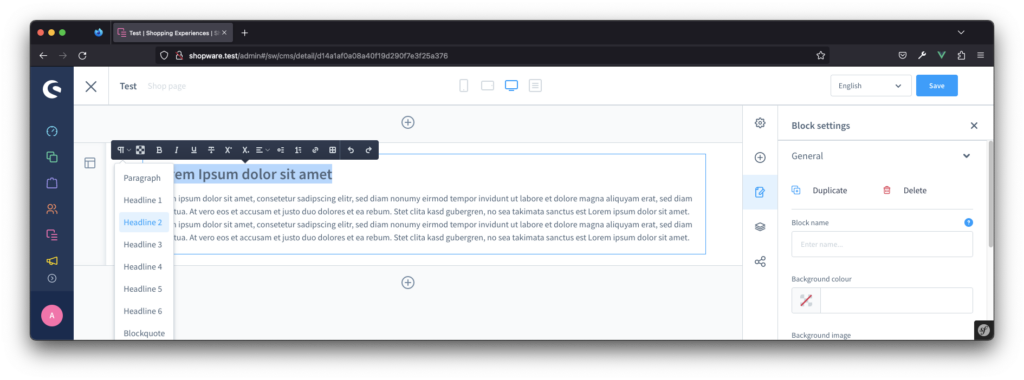Using a Single H1 Heading in Shopware: An Effective Approach

It is best practice to use the H1 heading tag for the title of your post or page, as having more than one H1 heading can indicate that the content is about multiple equally important topics. Bionic SEO will give a red feedback warning if more than one H1 heading is used. In this article, we will explain why it is generally not necessary to use multiple H1 headings in a single post or page.
The Importance of Proper Heading Structure for SEO
In content management systems like Shopware, headings are organized into different levels, with H1 being the highest rank and reserved for the title of your post or page. The remaining headings, H2 through H6, are used throughout the rest of the text to indicate the importance of each section and how it relates to the rest of the content.
This hierarchical structure helps readers understand and navigate the content, and it also aids search engines in comprehending the relative importance of the various (sub)topics within the text. When search engines analyze a webpage, they look at the HTML version of the site and read the HTML heading tags to understand the structure of the content.
To Use One or Multiple H1 Headings: That is the Question
As previously mentioned, the H1 heading should be used only once as the title of your category or landing page (not to be confused with the SEO title).
Using multiple H1 headings can lead to confusion for both readers and search engines, and may even result in people leaving your site. Additionally, proper use of headings makes your content more accessible for those using screen readers, as these devices rely on headings to navigate the text.
While it is acceptable to use the other heading levels as needed, it is important to remember the hierarchical structure of headings, with H2 preceding H3 within a particular topic. For more information on how to use headings effectively for SEO, refer to this comprehensive guide.”
Understanding the Single H1 Heading Check in Bionic SEO
The single H1 assessment in Bionic SEO for Shopware checks for the presence of an H1 heading within the body of the text, other than at the very beginning. If such a heading is detected, Bionic SEO will provide a red feedback bullet. Fortunately, this issue can be easily resolved.
Locating and Modifying Your H1 Headings
In order to avoid having multiple titles in your post, you will need to locate all H1 headings and change them to a lower heading level.
Changing an H1 heading within a category or landing page
Locate any CMS text element within your CMS layout. Mark the heading and change the heading to a lower one.

Conclusion
Proper use of headings can improve your SEO. As you have learned, the H1 heading should be used only once as the title of your post. To avoid multiple titles, make sure to use the H1 heading only once. If you need assistance, tools like Bionic SEO can help ensure that you are using headings correctly.
For those using Shopware, the Bionic SEO app can help monitor headings and other important SEO elements, which includes additional features and access to SEO courses to optimize the site for both visitors and search engines.


